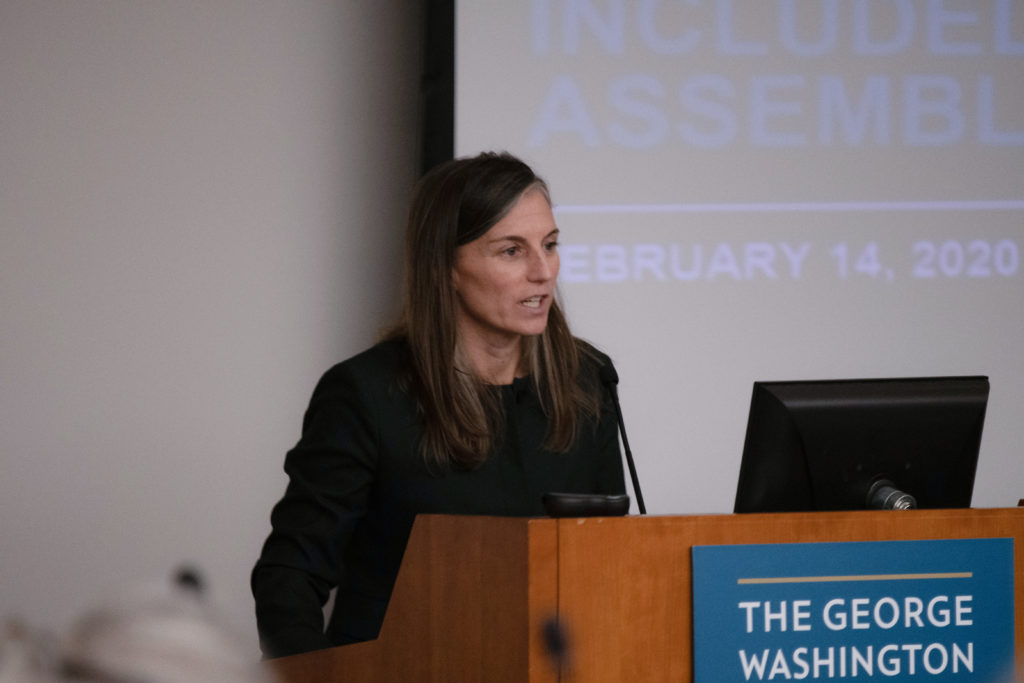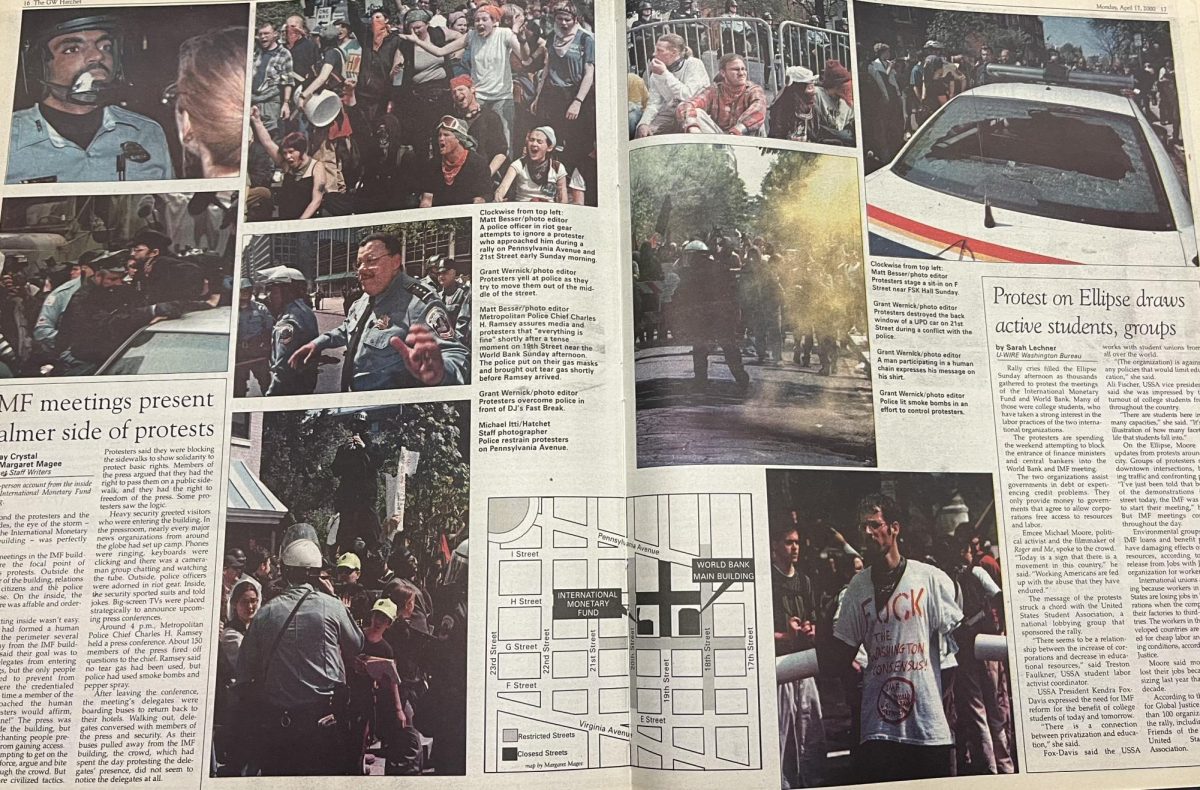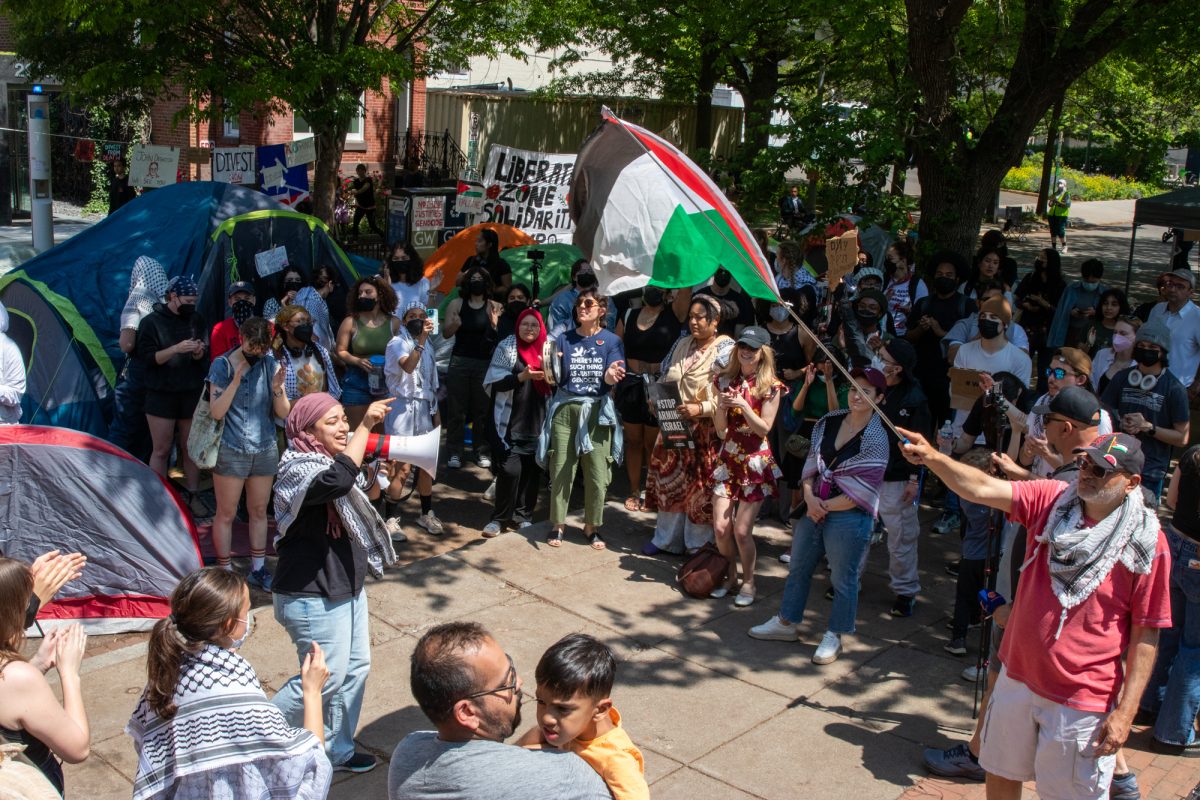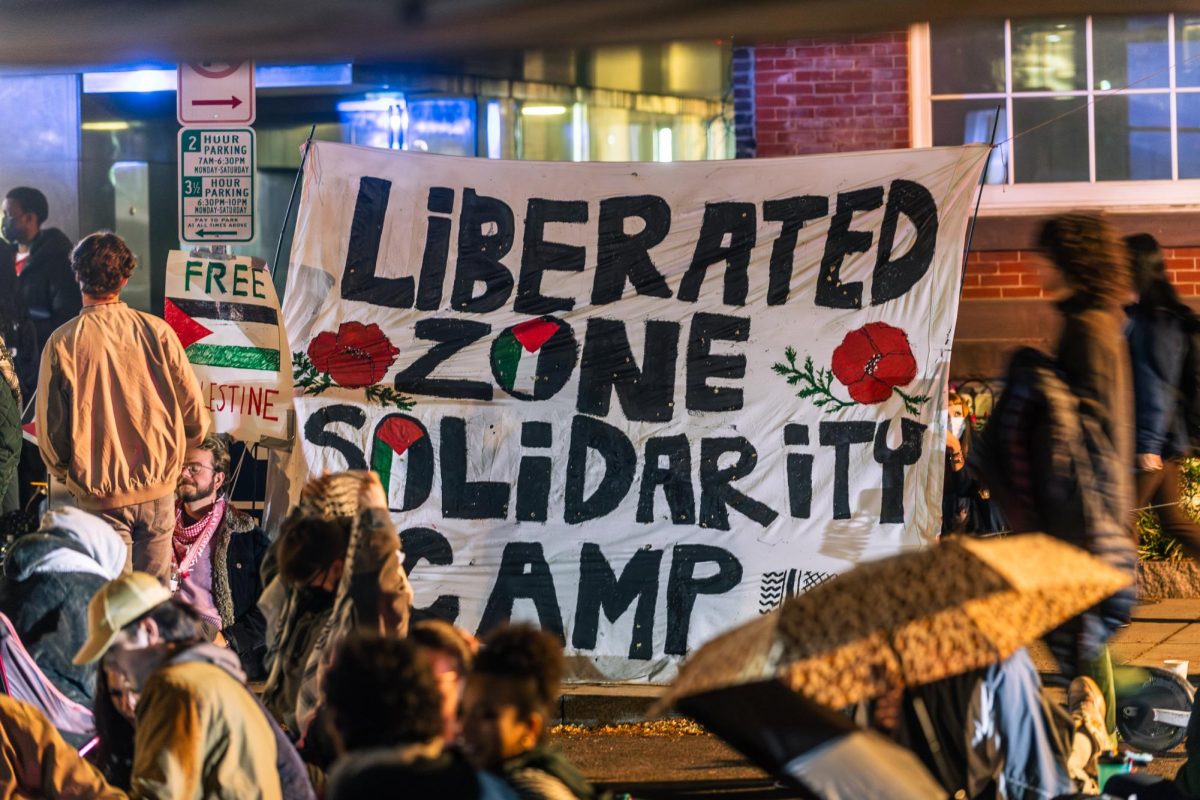A professor partnered with a local artist to transfer a COVID-19 flag memorial from the RFK Stadium to a digital memorial launched earlier this month.
Sarah Wagner, an associate professor of anthropology, said she has been researching the effects of the coronavirus on mourning and commemorative events since May for her project, “Rituals in the Making.” During her research process, Wagner said her visit to artist Suzanne Firstenberg’s memorial “In America How Could This Happen…,” which showcased one white flag for every COVID-19 death displayed in RFK Stadium, sparked the idea for their digital collaboration in November.
“It was just being confronted with this sea of white flags,” Wagner said. “It was a little bit of a windy day the first time I encountered it, and so these flags have a kind of motion. There’s a sound to it, and it’s just incredibly powerful. That was my first impression, coupled with having a conversation with Suzanne.”
Wagner said during the conversation, Firstenberg shared her concern that the installation was set to close after Thanksgiving because there was insufficient space to accommodate the then-surpassing 250,000 flags. Daily COVID-19 deaths reached nearly 3,000 in the weeks following Thanksgiving, according to the Centers for Disease Control and Prevention.
“She was really struck by the fact that the installation was coming to a close, and it felt incomplete,” Wagner said. “That was when we were entering into the next major wave that would carry all the way through February, and so she was aware that it was in the middle of a pitched battle against COVID and that people were dying.”
COVID-19 deaths have skyrocketed since then, with almost 550,000 deaths in the United States to date, according to the CDC.
Wagner said many of the flags carried personalized messages from family members who had lost their loved ones and wanted to dedicate a flag to them. She said she suggested digitizing these 1,865 personalized flags so family members could continue acknowledging the loss of their loved ones.
Firstenberg, the artist who created the initial physical installation, said she wanted the physical memorial to capture the virus on both “the individual level and the national level.” She said the personalization on the 1,865 flags allowed visitors to reflect on the pandemic’s individual toll.
“When a visitor would come, I would suggest that they look at one flag and just imagine what that life was like – how many people that person knew, how many lives that person touched, how many family members and friends that person had – and then direct the gaze upwards across the immense field of white flags to imagine the amount of loss that the art represented,” she said.
Firstenberg said after installing the physical memorial, news about her work spread through Facebook grief groups, in which people from around the country would share the names of loved ones they had lost. She said members of these Facebook groups who lived locally would collect these names, visit the installation and write names or other words on the flags to memorialize those lost.
Firstenberg said she wanted her installation to compare the country’s response to the pandemic to the response of other countries. She said she planted 25 white flags under the installation’s sign in October, showcasing the number of deaths New Zealand had faced at the time.
“I planted a second array right underneath the sign, the large sign for ‘In America,’ and that array had 1,675 flags,” she said. “That number represented how few deaths we would have suffered if we had done what New Zealand did to address the pandemic. They had quality testing, great testing protocols and their people actually quarantined.”
Firstenberg said the reason she decided to plant one flag per person rather than have one flag represent many people was to make the death toll more visible.
“I wanted art that would draw attention to the fact these were real loved ones in real families,” Firstenberg said. “They weren’t numbers. These were real truly very, very difficult losses.”
Firstenberg said Maggie Peterson, an academic administrator in the anthropology department, was largely responsible for transitioning this physical installation to the online environment.
Peterson said Wagner asked her to join the project, knowing that her expertise in archaeology would be helpful in finding a way to collect, mark and preserve each physical flag.
Peterson said she spent the entire day on Nov. 28 – along with Wagner, Firstenberg and Adam Fracchia, an assistant research professor of anthropology at the University of Maryland – walking through the memorial. She said they used tape measures, graph paper, pencils and red flag tape to mark each personalized flag with a tape and to assign it a number.
She said 17 volunteers helped them as they plotted each flag’s number on a piece of graph paper, which was scaled to represent the size of the field.
“At the end of the day, we spread out onto the sidewalk, and we kind of looked at it from a bird’s eye view,” Peterson said. “In my head, I was like ‘We can make this a digital map. It doesn’t have to stop here.’”
Peterson said she transferred the scanned versions of the physical maps onto software called ArcGIS, which compiles geographic data to create a digital map. She said she altered the resulting website over time, increasing the accessibility of the ‘search for your flag’ and ‘add a flag’ sections and making the background information on the mourning rituals and digitization process more secondary.
“I really want people to see it,” Peterson said. “I want them to be able to feel comfortable planting a flag and knowing that their flag isn’t just going to exist in the space of the internet, but it’s going to exist. We’re going to try and preserve it in some shape, way, shape or form in the future.”








